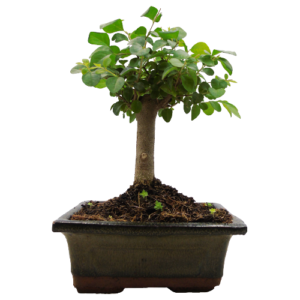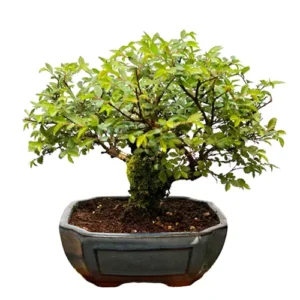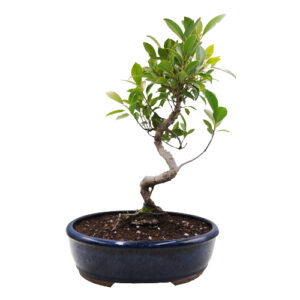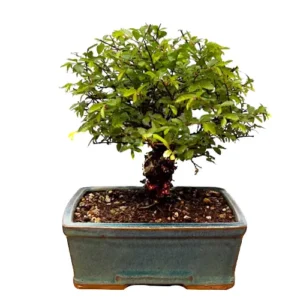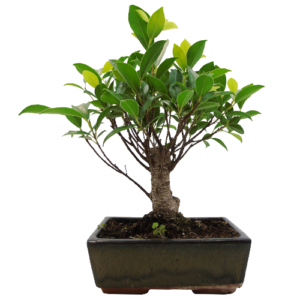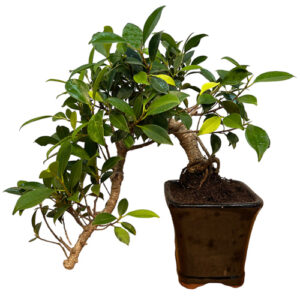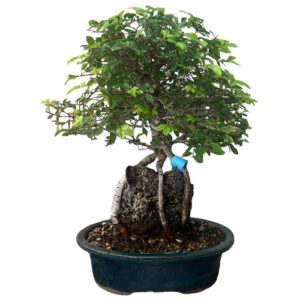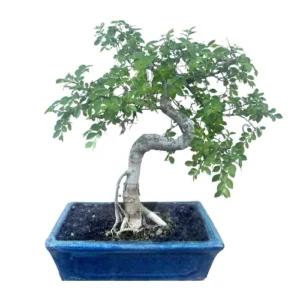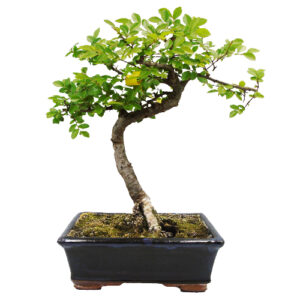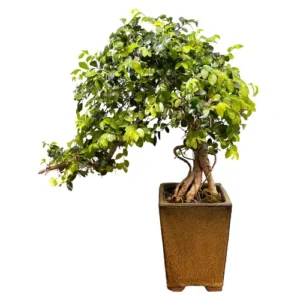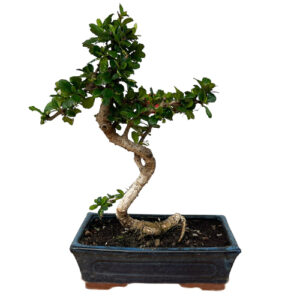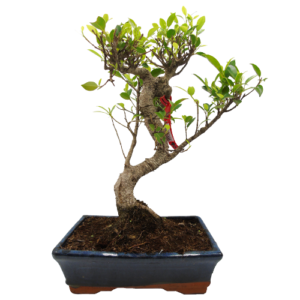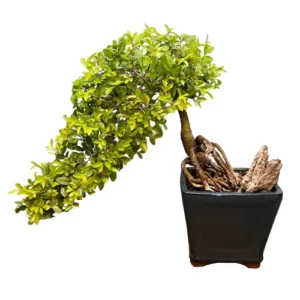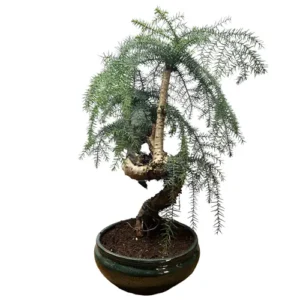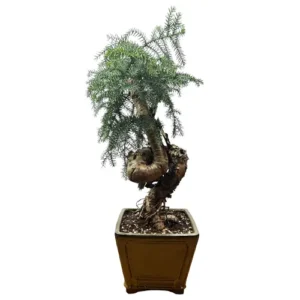Hibiscus
Hibiscus Bonsai
Native to China, India, Hawaii, Fiji, Mauritius and Madagascar. Its many ancestors and species can be seen all over the world, Hibiscus are beloved flowers globally for their incredibly colourful one-day flowers. Typical bonsai species are the tropical Chinese Hibiscus and the frost-hardy Hibiscus syriacus.
Hibiscus Bonsai Care Tips
Placement
An indoor location that provides full sun throughout the day and some semi-shade from the hottest summer sun is advisable. Chinese Hibiscus are best grown indoors in the UK as a temperature below 10 C could kill the plant. Even though Hibiscus syriacus is a hardy specimen it requires frost protection.
Watering
Water your Hibiscus thoroughly as soon as the top layer of the soil is dry. Flower buds will drop if the roots are left to dry out. Be consistent but be careful to not overwater.
Feeding & Fertilising
Hibiscus bonsai required feeding once a month with solid organic fertiliser or, alternatively, a liquid feed weekly.
Pruning & Wiring
Pruning your bonsai is important not only to create or maintain an aesthetic style but also to ensure optimal health. Substantial pruning can take place early on in the Hibiscus development with the tree’s shoots and branches. New shoots can be shortened to one or two leaves on mature trees. To encourage blooming stop any trimming in June.
If wiring Hibiscus take care as the branches break quite easily. We recommend using wires with a thickness that matches the thickness of the branch: if the wire you choose is too thick you will damage the bark. If it is too thin, it won’t be effective.
Repotting
Repotting your tree is an important way to provide a fresh and suitable soil mix and ensure appropriate root health. Every two to three years, repot your Hibiscus bonsai in the Summer. Older trees respond well to a healthier proportion of Akadama in the soil mix. Older trees require repotting less frequently. This is a responsive species to root pruning.
Trees that are ready for repotting will require root pruning, a suitable new pot and appropriate soil mix.
When repotting, do not cut back the root mass by a large amount, and choose a well-draining soil mix that has a neutral or slightly higher PH value of 5-6 but not over 7. We tend to use a mixture of different speciality bonsai soils on our trees. Every species is different so please contact us for free soil-mix advice or to take advantage of our repotting service.
Bonsai make for a one-of-a-kind indoor plant offering elegance, nature and art all in one minute form. Across an array of exquisite and erudite species, they all demand their own specific care and cultivation needs in order for their beauty to flourish. We have an extensive library of care guides for indoor bonsai trees so you can make an informed and considered choice. It’s not about selecting the perfect bonsai, it’s about selecting the perfect bonsai for you.
Hibiscus Bonsai - Typical Queries
How to propagate Hibiscus bonsai?
Hibiscus bonsai care be propagated through seeds, cuttings or layering. Seed propagation should take place in the Spring. Cuttings should take place in the Summer. Air-layering from a parent plant is also possible.
Do Hibiscus Bonsai get pests and diseases?
Hibiscus bonsai are rare to attract pests or diseases. Chlorosis can occur if the plant is overwatered with particularly calcareous water. An iron-rich feed is appropriate should signs of chlorosis appear.
Can you keep a Hibiscus bonsai outdoors?
This is dependent on climate and the subspecies of Hibiscus being grown. As a general rule, for the UK, hibiscus is a tropical species and will likely struggle with most of the UK’s climate throughout the year. This being said if growing a Hibiscus syriacus, known for being frost hardy, this is more appropriate for the temperature UK climate.

